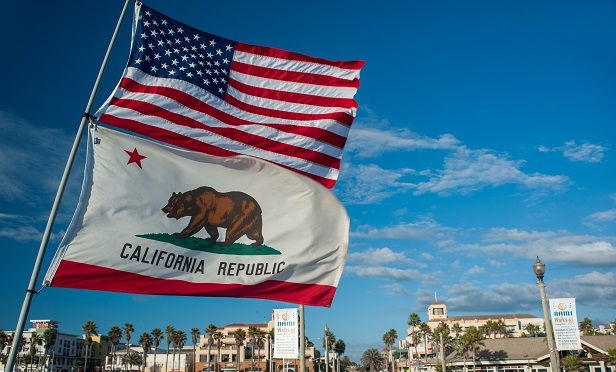 Single-payer "is one of the key places to look, but not the onlyplace," said California Health and Human Services Secretary Dr.Mark Ghaly. (Photo: Shutterstock)
Single-payer "is one of the key places to look, but not the onlyplace," said California Health and Human Services Secretary Dr.Mark Ghaly. (Photo: Shutterstock)
California Gov. Gavin Newsom was a single-payer candidate.
|The Democrat campaigned hard for the creation of one publicinsurance program for all Californians. And within hours of taking office last year, he called on thefederal government to allow California and other states to createsingle-payer programs.
|On Monday, some of the biggest names in California health carepolicy are convening in Sacramento to fulfill that promise.
|Related: Why single-payer may be closer than you think (andwhat to do about it)
|Or not.
|Those who hope this meeting could lead to the end of privateinsurance and the creation of a state-based "Medicare for All"-typesystem should probably temper their expectations.
|"The goal of this commission is likely to demonstrate politicalmomentum without making any firm policy commitments," said Thad Kousser, chair of the political science department at theUniversity of California-San Diego.
|Newsom's Healthy California forAll Commission, which will gather near the Capitol for its inaugural meeting, is made up of 13people from universities, nonprofit organizations, hospitals andadvocacy groups.
|The commission will discuss how to get every Californian covered— with an emphasis on single-payer, a system in which health careis paid for by a single public authority.
|But the reality is that single-payer is unlikely to materializeanytime soon, given the Trump administration's opposition to theconcept and the exorbitant cost of completely overhauling thehealth care system.
|Perhaps most important, members of the commission don't agree onwhat the commission should accomplish.
|Single-payer "is one of the key places to look, but not the onlyplace," said California Health and Human Services SecretaryDr. MarkGhaly. Newsom's office, which declined to comment on thecommission, directed questions to Ghaly, who will chair thepanel.
|But there will be powerful voices on the commission that arefirmly committed to creating a single-payer system for thestate.
|Stephanie Roberson, the government relations director for theCalifornia Nurses Association, won't be on the commission herself,but her union will have a representative on the panel. The union isa loud and insistent advocate for single-payer.
|"There is absolutely universal concern across this organizationthat this commission could be used to slow-walk single-payer,"Roberson said. "More often than not, a bill becomes a study or acommission and no one ever hears about it again."
|The commission plans to issue two public reports, one in July2020 and the other in February 2021. The first will detail thecurrent state of health care coverage in California and the secondwill explain the nuts and bolts of how to get a single-payer systemup and running.
|For the single-payer advocates on the commission, thesequestions have already been asked and answered.
|A 2017 special legislative committee investigated single-payerin California and issued a report on California's uninsured population thatoutlined several options for covering them, such as how toimplement and pay for single-payer.
|Much of that work is now being repeated. The state of Californiaawarded a $2.5 million contract to a group from the University ofCalifornia to conduct research and analysis for the new commissionand draft its reports. These are the same people who wrote the lastreport for the legislative committee.
|But Deborah Kelch, executive director of the nonprofit andnonpartisan Insure the Uninsured Project, said the older findingsmight not reflect today's reality.
|"Those all predate our current coverage landscape, so it's agood time for policymakers and a commission like this one to reallytake a look at what's true now," she said.
|No one thinks single-payer would be cheap or easy to implement,and estimates vary on how much it would cost. A 2017 legislative estimate put the price tag for California ataround $400 billion annually. A newer analysis released in mid-January focused instead onsavings and concluded that savings from single-payer systems wouldoutweigh the costs.
|Whatever the commission decides to do, one huge hurdle to getsingle-payer up and running in the state remains: President DonaldTrump.
|Seema Verma, head of the Centers for Medicare & MedicaidServices, said she would reject any state plans to use federal dollars to implement asingle-payer system.
|But the hostility from the federal government doesn't mean thecommission's work is meaningless, said Scott Graves,director of research for the California Budget & Policy Center.Instead, it could give the commission time to get a single-payerplan ready for a different president, he said.
|"If we decide as a state that we really want to move towards asingle-payer health care financing system, we will have done ourhomework," Graves said.
|Dr.Robert Ross, president and CEO of the California Endowment, afoundation that focuses on expanding health care access amongCalifornians, sees a path forward whether Trump wins or loses inNovember.
|Ross, a member of the commission, said he's willing to look atall options to get the remaining 7.2 percent of uninsured Californians covered, notjust single-payer. For instance, California has expanded Medi-Cal eligibility to people who are in the countryillegally, and created state-based subsidies to help people buy private insurance.
|"I'm sure there are others on the commission resolutely focusedon single-payer," he said. "That's fine. We should have thatconversation and that debate within the boundaries of thecommission's work."
|Jennifer Kent, former director of the state Department of HealthCare Services, said it's vital to continue the process of debates,research and public meetings. They will bring in more people towork out the thorny details of what could be a massive overhaul ofthe health care system, she said.
|"Democracy is messy," said Kent, who is now a health careconsultant. "The people who say we already know what the answer is— if we knew what the answer is, it would have been donealready."
|This KHN story first publishedon California Healthline, aservice of the California HealthCare Foundation.
|Read more:
- Canada's single-payer health system substantiallycut admin costs compared with U.S.
- Single-payer making inroads on state, federallevel
- Just 2 candidates in the first Democraticpresidential debate back single-payer
Complete your profile to continue reading and get FREE access to BenefitsPRO, part of your ALM digital membership.
Your access to unlimited BenefitsPRO content isn’t changing.
Once you are an ALM digital member, you’ll receive:
- Critical BenefitsPRO information including cutting edge post-reform success strategies, access to educational webcasts and videos, resources from industry leaders, and informative Newsletters.
- Exclusive discounts on ALM, BenefitsPRO magazine and BenefitsPRO.com events
- Access to other award-winning ALM websites including ThinkAdvisor.com and Law.com
Already have an account? Sign In
© 2024 ALM Global, LLC, All Rights Reserved. Request academic re-use from www.copyright.com. All other uses, submit a request to [email protected]. For more information visit Asset & Logo Licensing.








